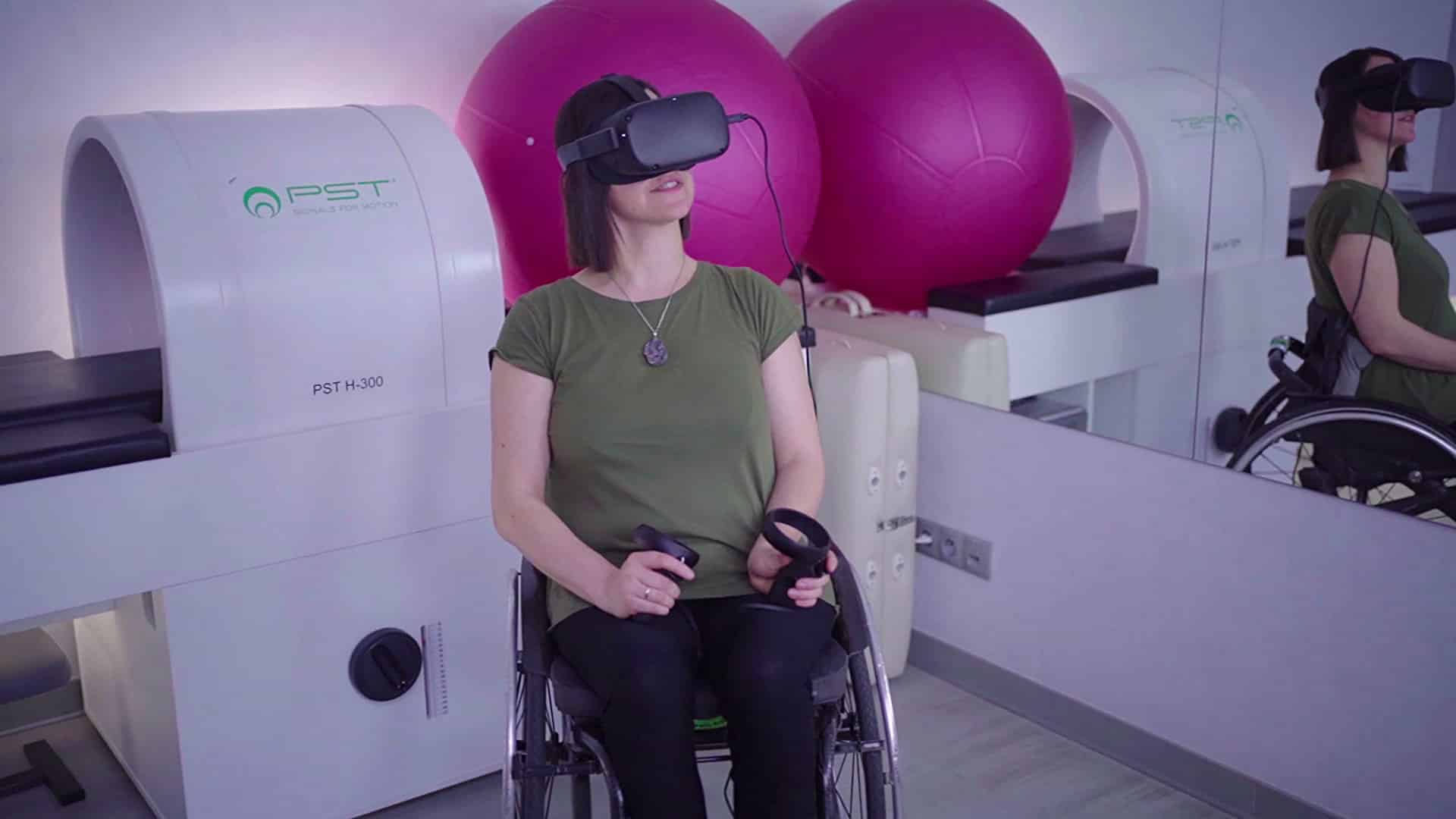WalkinVR is Steam-compatible software that helps remove barriers for people with disabilities. The software has been around since 2017 but is officially released on Steam today. It’s welcome news for all of us who have been pushing to make VR more accessible.
There have been other initiatives to address access issues, but most have focused on one aspect, such as visual impairment. And while we’ve seen interesting projects such as Microsoft’s Holocane and Samsung’s Relúmĭno app, they never seem to get beyond the experimental stage. WalkinVR is not an experiment but a solution to removing physical disability barriers. It won’t solve every challenge, but it’s a massive step in the right direction for VR to expand in education and workforce training.
Making VR more Accessible
Here’s a quick video overview from RoadtoVR.
The program was designed by Grzegorz Bendarski to help people adjust the orientation, position, and motion range of their hand controllers. It allows you to make in-game adjustments depending on your height and ability to move (for ex., if you are in a wheelchair).
VR Scout describes Bendarski’s approach to making VR more accessible.
During WalkinVR’s beta phase, Bendarski worked directly alongside individuals with various disabilities in order to fine tune the software, including amputees as well as those suffering from paralysis and cerebral palsy. He studied how each player interacted with their virtual environment in order to identify where their respective conditions came into play the most. Each disability needed a different solution, and even people with the same disability found that they needed a slightly different approach from one another.

WalkinVR is Simple to Use
WalkinVR is simple to use. Add it to your SteamVR account, launch it the first time in case it needs extra drivers, and you’re set. The specs parallel your current PC setup. From the description on Steam, the program covers four areas to make VR more accessible:
Movement and Rotation
Players are now able to move and rotate in virtual reality without having to perform the movement in the real world. This feature is most utilized when players need to move, reach, stand, and turn around 360 degrees.
Gameplay with Personal Assistant
A third part Xbox Controller can be used to assist the player with movement and button pressing.
Adjustment of Controller Position
Players can adjust the controllers’ position and range of motion. This feature helps players who are not able to move their controllers to the height or depth required by the video game. Players can also adjust the movement sensitivity of their virtual reality controller that is translated from their physical controller. A 3- inch controller movement can translate to a 6-inch controller movement in virtual reality. Players can change the orientation of their controller in virtual reality. This helps players who have a limited range of motion in their wrists.
Hand tracking with an external sensor (in development)
This feature is dedicated for players that have problems with holding controllers. This can be mostly caused either by spastics or spinal injury. In such configuration, external sensor is tracking player’s pose and transfers that position into Virtual Reality.
The WalkinVR site has specific instructions on how to use each feature. While the app is designed for people with disabilities, the creators also raise the possibility of using it for “lifestyle and wellbeing purposes” therapeutic uses that go beyond entertainment.
Only the First Step
WalkinVR is a significant step for making VR more accessible, but there is much more work to be done. VR interfaces are still primitive; our hand controllers designed from a gaming perspective, and our headsets are bulky and heavy. More problematic is Silicon Valley’s efforts on the accessibility front – there’s an abundance of talk, some experiments, but little in the way of concrete action.
WalkinVR can be used on the Oculus Rift/Rfit S, HTC Vive, Valve Index, and Windows Mixed Reality devices. It’s welcome news to see an app for making VR more accessible released on Steam.
Let’s not stop here.
Emory Craig is a writer, speaker, and consultant specializing in virtual reality (VR) and artificial intelligence (AI) with a rich background in art, new media, and higher education. A sought-after speaker at international conferences, he shares his unique insights on innovation and collaborates with universities, nonprofits, businesses, and international organizations to develop transformative initiatives in XR, AI, and digital ethics. Passionate about harnessing the potential of cutting-edge technologies, he explores the ethical ramifications of blending the real with the virtual, sparking meaningful conversations about the future of human experience in an increasingly interconnected world.

